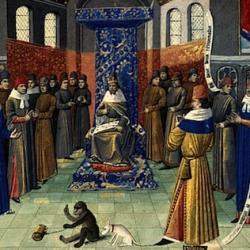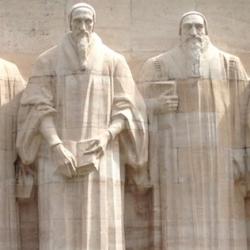Will Herberg (Protestant Catholic Jew) summarizes the American response to the growth of the Irish Catholic population of the US.
Tension simmered throughout the middle antebellum decades of the nineteenth century, as nearly 2 million Irish, mostly Catholic, immigrated: “The Irish, precisely because in language, manners, and culture, they were so like and yet so different from the native Americans, seemed to the latter a far greater peril than the more obvious foreigners from the Continent; moreover, because they settled in great urban centers, such as New York, Boston, and Philadelphia, concentrating in ghetto-like quarters, and so were particularly ‘visible’ to the unsympathetic eyes of the natives. Feeling grew tense; friction developed in many areas, and anti-Catholic passion was fed by rabble-rousers and agitators, who were responsible for a flood of incendiary books, pamphlets, and newspapers. Catholics were embittered by the fact that the schools and public institutions to which the were compelled to resort were avowedly Protestant and were often employed to break down the Catholic faith” (155).
Violence broke out in the 1830s. St Mary’s Church in New York was burned down in 1831, and a few years later a mob attacked and demolished a convent near Boston. For three days during 1844, Philadelphia was in chaos: “Thirteen persons were killed, scores injured; the Catholic seminary, two churches, and whole blocks of Catholic dwellings went up in flames.” That was nothing compared to Bloody Monday in Louisville in 1855: “Nearly a hundred Catholics were slain and scores of houses burned to the ground” (155-6).
Anti-Catholic animus wasn’t theological but national: “Catholicism . . . is un-American, undemocratic, alien to American ways, and prone to place loyalty to church above loyalty to state and nation. Particularly shocking to many Protestants is the Catholic insistence on by-passing the public schools and educating their children in their own religious institutions.” Herberg quotes an editorial in The Christian Century (!) whose author charged that the Catholic church was embarked on a “conscious and well-planned large-scale attempt . . . to separate Catholics from other Americans in almost every area of social life.” They want “to create a separate social order which will exist side by side with the rest of American society” (252). This divisiveness was not merely a religious concern, but a political threat, and had to be arrested.
The irony, of course, is that Catholics, especially Irish Catholics, were being rapidly Americanized. Indeed, so thoroughly Americanized that the Irish nearly fused religion with national loyalty: “Despite the hatred and persecution he encountered, or perhaps for that very reason, the Irish Catholic newcomer . . . adopted this country as his own and transferred his deeply emotional nationalism to his adopted land. His Americanism took on the same religious fervor and soon came to be identified with his Catholicism. . . . Irish, Catholic, and American became almost identical to the Irish-Catholic mind, and the Americanism of the Irish Catholic developed into something much more than merely the sense of national ‘belonging’” (160-1).
Protestants have long kept alive the memory of Catholic abuse of Protestants during and after the Reformation. We want Catholics to own up their history of oppression. We don’t like to recall our own atrocities, including ones that were committed right here in the ol’ US of A.















